How to wash and store greens, plus everything else you need to know about this nutritious bunch – from health benefits to recipes, I’ve got you covered!
If you skim my real meals posts, you’ll notice that greens make an appearance on my plate quite often. If not for multiple meals a day, at least once a day, I’m sneaking in a few handfuls of greens. Whether that is in a big fridge-friendly kale salad or a green smoothie bowl to start the day, greens are essentially a “food group” in my mind.
Greens are full of fiber and micronutrients (vitamins and minerals), and they just make me feel good – plain and simple. All that fiber fills you right up!
Surprisingly, I feel that greens are one of the easier vegetables to get into kids. Mazen likes salad of all kinds (if it’s mostly plain greens in a dressing) and Birch gets spinach in his smoothies a few times a week, at least.
How To Wash and Store Greens
Today I’m giving you the low down on how to wash and store greens and how you can incorporate them into your daily meals. From pastas and salads to soups, smoothies, and sauces, I’ll show you just how delicious sand nutritious they can be!
Get the Nutrition Facts on Greens
If it’s not obvious, green leafy vegetables are edible plant leaves. Some are tender and best served raw (like watercress or microgreens); others are hearty and thick and taste best cooked (like collard greens or mustard greens). They vary widely in structure, flavor, and shape.
Types of Greens
Admittedly, I don’t eat ALL the types as often as I’d like. I remember once in the early blog days picking dandelion greens on the side of the road to eat. Maybe not the best source, but A+ for effort! We tend to stick to the most popular types: kale, arugula, spinach, and mixed greens.
Well-known greens
- Kale – Slightly bitter when raw and more neutral when cooked
- Arugula – Famous for peppery taste. Great for salads or wilting.
- Bok Choy – Mild flavor and great for sautéing, from the crunchy base to the tender leaves.
- Spinach – Delicate flavor and versatile. Our favorite for smoothies!
- Collard Greens – Best cooked. Bitterness fades with cooking time.
- Cabbage – Also bitter when raw, but delicious steamed (really!).
- Romaine – Crisp and refreshing and great for chopped salads or lettuce wraps. Also can be grilled!
- Watercress – A little bitter and a little spicy. Best raw in salads, as a garnish, or wilted.
Lesser-known greens
- Sorrel – Can be tart and is best sautéed and served with meat or fish.
- Chard – A beautiful leaf! Can be a little earthy tasting. Best sautéed in garlic!
- Endive – Nutty and mellow. Great to use for mini wraps or scooping up apps.
- Escarole – Flavor ranges from sweet to bitter. Great in soups.
- Microgreens – Great for garnishing, mixed in salads or layered in sandwiches.
- Mustard Greens – Peppery and spicy. Best cooked!
- Turnip Greens – Also peppery. Best when braised.
- Beet Greens – Earthy flavor that can be enjoyed raw, but I prefer them cooked.
- Broccoli Raab – Can be quite bitter; best cooked.
- Kohlrabi Greens – Mild and sweet, yet best cooked.
- Dandelion Greens – Best not picked off the side of the road 🙂 Enjoy in salads, sandwiches, or sautéed.
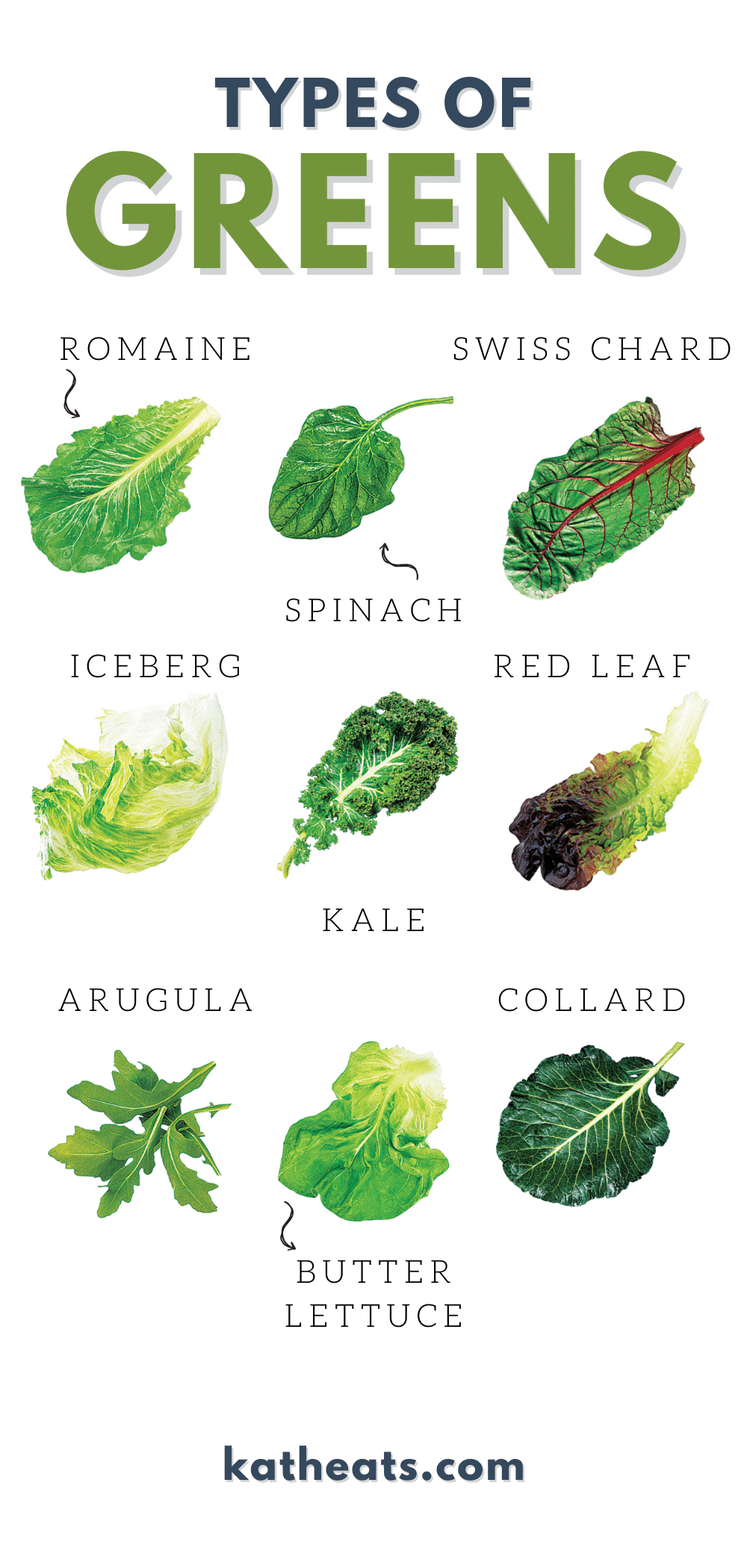
Health Benefits of Greens
Leafy greens are low in calories and are a great source of fiber and vitamins A, C, and K.
In a study that calculated nutrient density for almost 50 fruits and vegetables, 17 of the top 20 were leafy greens. (Impressive!!)
Research also shows that a diet that contains a variety of leafy greens is linked to a reduced risk of many chronic diseases including heart disease, cancers, and type 2 diabetes. Greens may also help to keep memory sharp as a person ages.
I’d be here all day if I shared all the amazing health benefits of leafy greens, but here are a few nutrition highlights that stand out.
- Swiss Chard contains compounds called polyphenols. A 2021 study suggests that these compounds have the potential to stop cancer cell growth.
- Cabbage – a cruciferous vegetable – contains sulforaphane, a compound that may lower a person’s risk for cancer.
- Spinach is rich in antioxidants called carotenoids, which may reduce the risk of cancer, decrease inflammation, and protect your eyes from disease. Consuming spinach and other leafy greens with fat helps your body absorb the carotenoids, so aim to eat a healthy fat like olive oil or avocado with your spinach.
How To Wash and Store Greens: Tips For Washing and Drying
- Store a head of lettuce whole. Keep greens whole until you need to use them, as pre-washing and chopping them will make them wilt faster.
- Remove any discolored leaves before you put into the fridge.
- To extend length of storage: rinse with water, shake off excess water, lay washed greens out on a layer of paper towels or a clean kitchen towel and roll up, secure with rubber band and store fresh clean greens in refrigerator. Drying greens with kitchen towels is the greener choice!
- If you have a salad spinner, chop greens, rinse in a colander letting sand and grit sink to the bottom, spin, and store washed lettuce in the spinner with the lid on for up to a week. Don’t store in a plastic bag – they’ll wilt faster.
Also! Check out this kitchen storage hack of topping a container with a paper towel can help fresh greens last much longer (of course, if you don’t eat them all by then!)
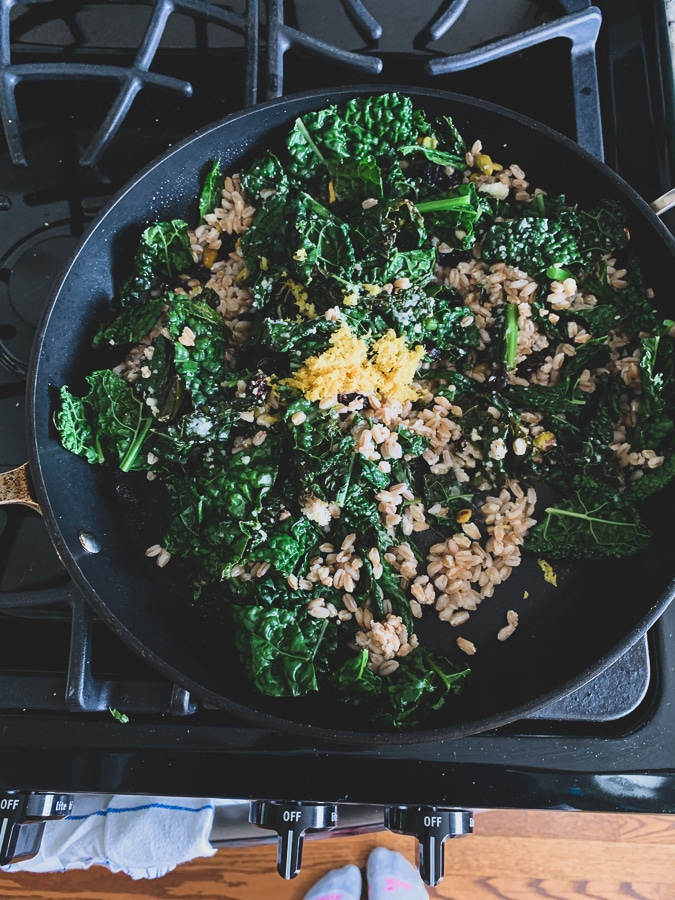
Ways To Enjoy Greens
We eat our greens every which way. Here are a few favorite ideas!
- mix together a big salad with all your favorite toppings and dressing
- blend baby spinach into smoothies and juices (the kids can’t taste it!)
- add chopped chard to soups and stews
- sauté collard greens with bacon
- add fresh arugula on top of wood-fired pizza (a la our favorite restaurant, Lampo!)
- sneak into baked eggs
- make a wrap with a collard “tortilla” – roll up with turkey and cheese
- add microgreens to your avocado toast
- upgrade your basil pesto with arugula or kale
- and most importantly: turn kale into chips!
Raw vs. Cooked
Did you know that cooked vegetables can provide more minerals? Heating releases bound calcium, making it more easily available for the body to absorb. Cooked spinach has 245 mg/cup of calcium, while raw spinach only has 30 mg/cup – wow!
Cooking can have other benefits, too. A 2009 study conducted by Harvard University showed that cooking aids chewing and increases digestibility. Which is easier to eat: raw kale or cooked kale? 😉
Recipes with Greens
1. Pasta Salad with Kale & Pesto
This is a fast and easy meal that packs in the leafy greens! Use homemade pesto if you have it, or keep it simple with your favorite jarred pesto. Finish with a sprinkle of parmesan.

2. Green Smoothie Overnight Oats
A combination of two of my favorite breakfasts: green smoothie bowls and overnight oats! The vibrant color should tell you it has plenty of vitamin rich greens in it, but it also has fiber from oats + protein from milk for a filling breakfast.
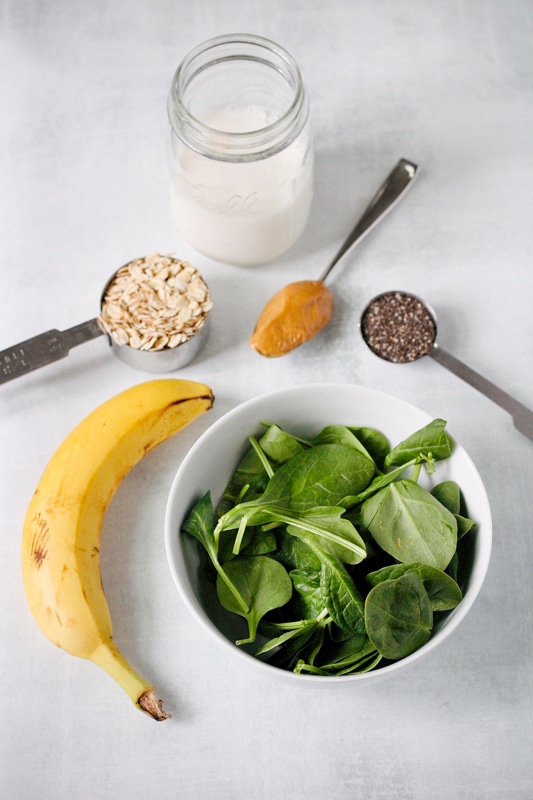
3. Tropical Kale Salad
Tropical Kale Salad is full of oranges, pomegranate, chickpeas and macadamia nuts! Aromatic, sweet, and quenching, citrus are the perfect winter produce to make a bright dish!
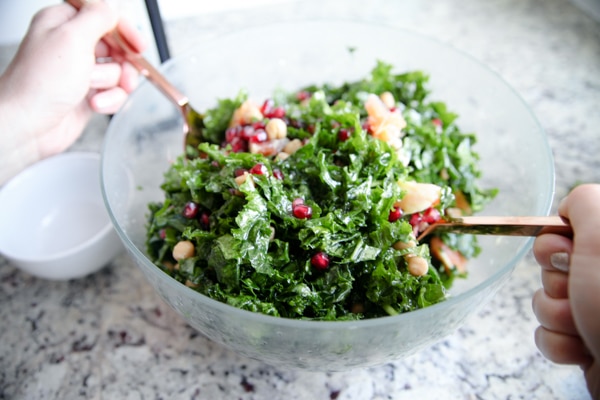
4. Sausage and Split Pea Soup with Kale
This pea soup recipe gets its flavor from smoked andouille sausage and good nutrition from carrots, celery, kale, and split peas.
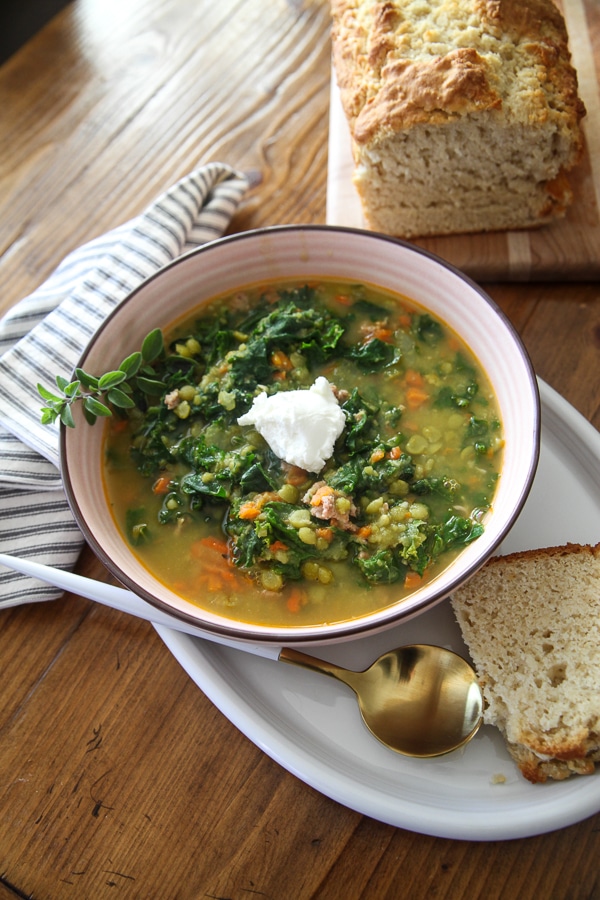
5. Pumpkin, Goat Cheese & Kale Lasagna
One of my favorite KERF recipes: Pumpkin, Goat Cheese & Kale Lasagna! This easy vegetarian recipe has a nontraditional combination of flavors that will knock your socks off.
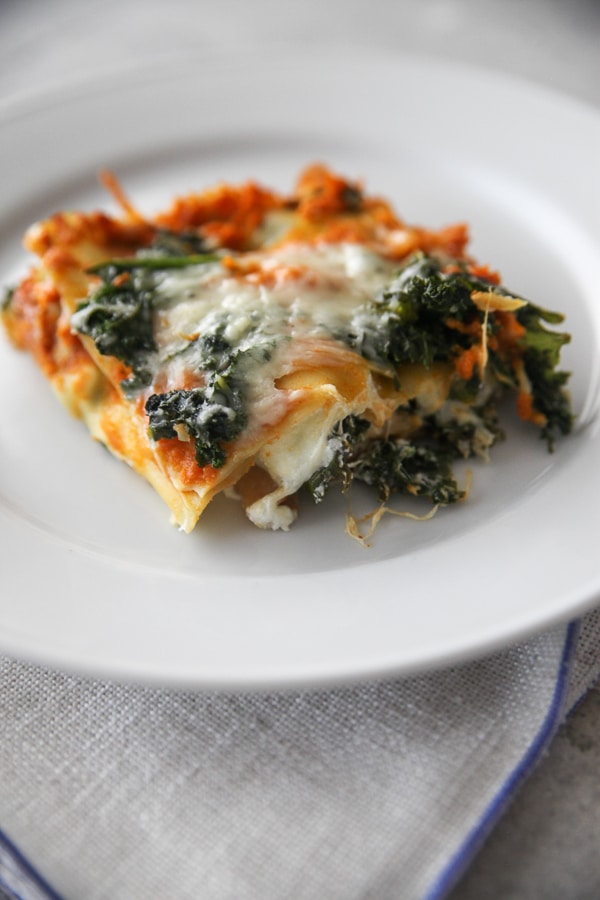
6. Air Fryer Kale Chips
These Air Fryer Kale Chips are light and crisp! Kale chips made in an air fryer get perfectly crispy and crunchy in just a few minutes and make preparing kale as easy as can be!
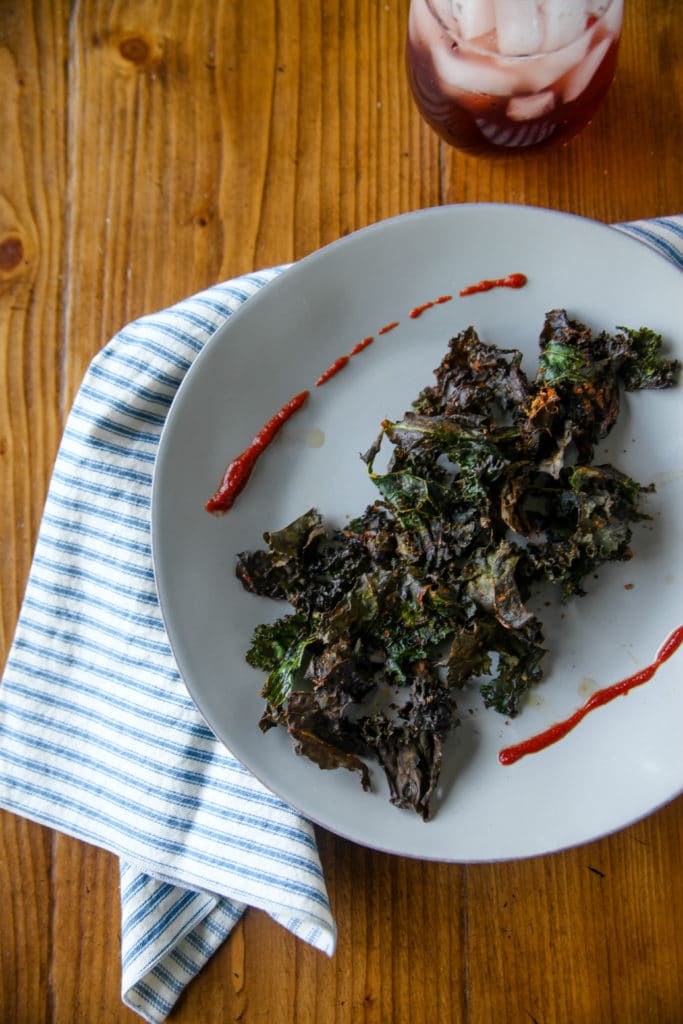
7. Oven-Baked Kale Chips Video
8. Herbs de Provence Arugula Pesto
I made a few more swaps to classic pesto and used roasted, salted almonds instead of pine nuts and an arugula and spinach blend in place of all the basil to save some money.
What greens do you enjoy most often? Is there a green you’d like to try?


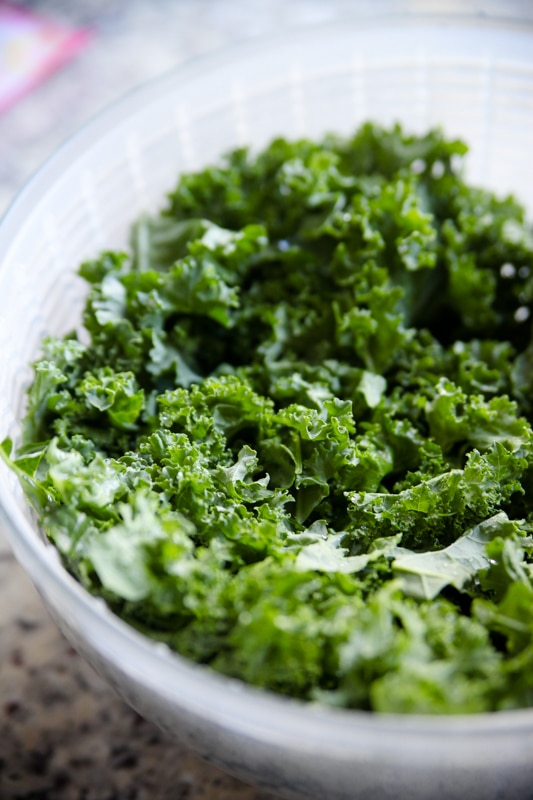
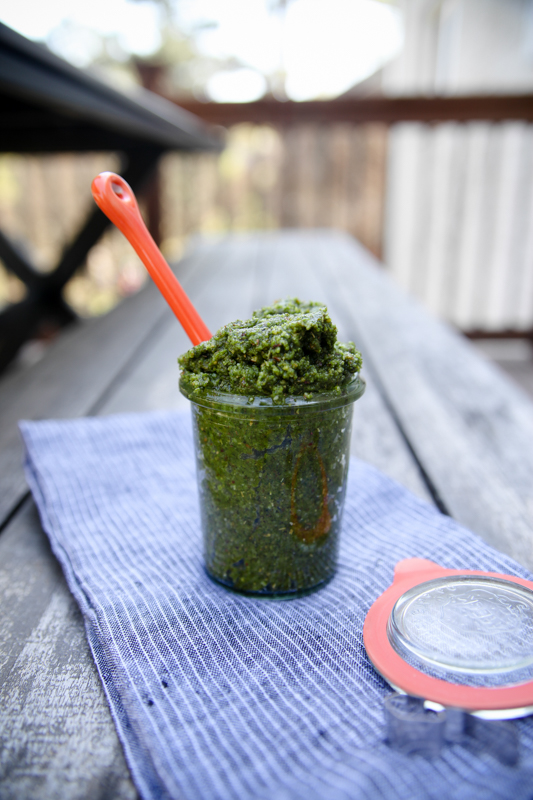


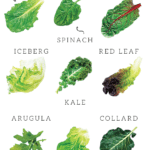
Kathryn says
Thank you. I need to start using the salad spinner my Mother bought me years ago
K~